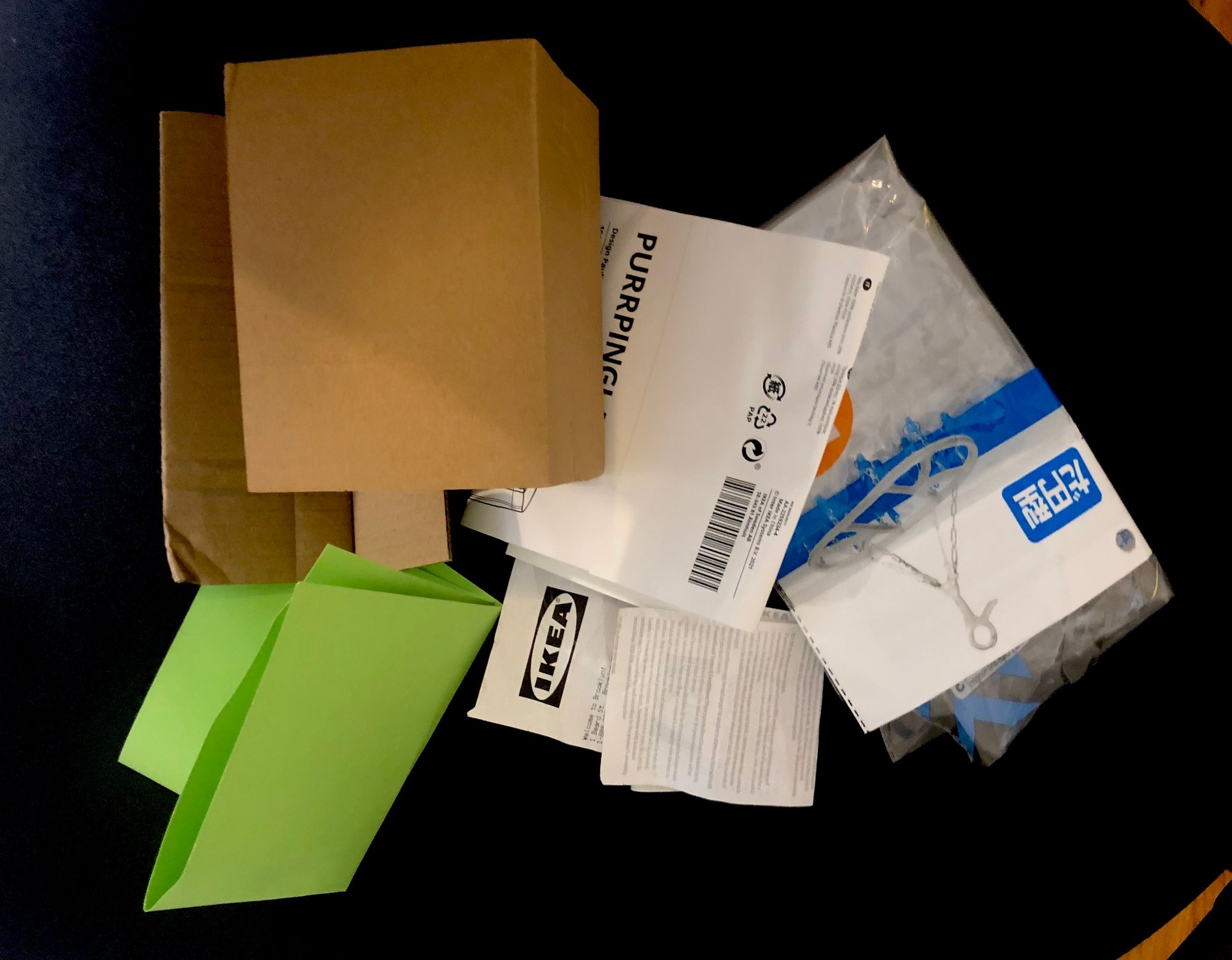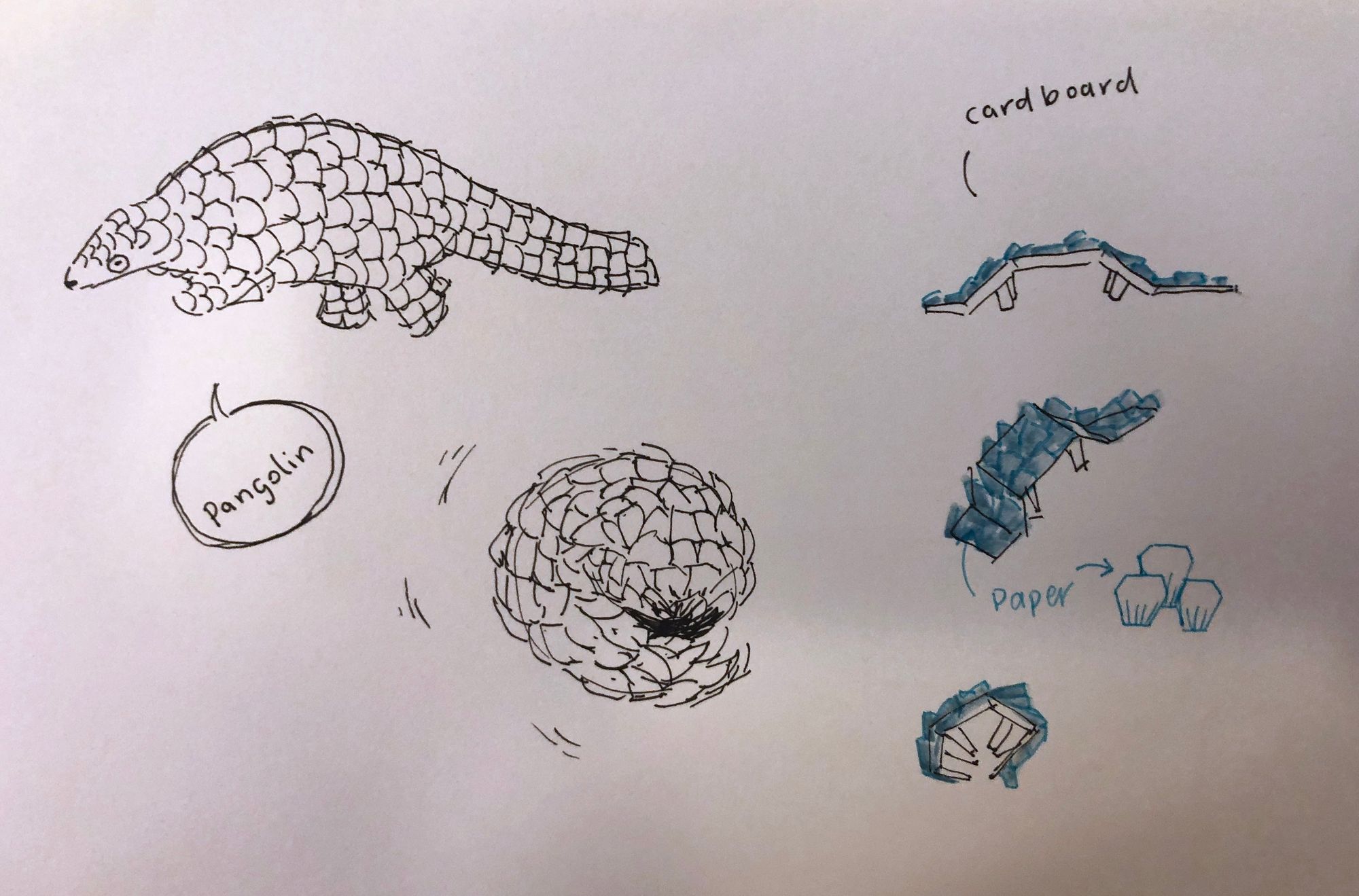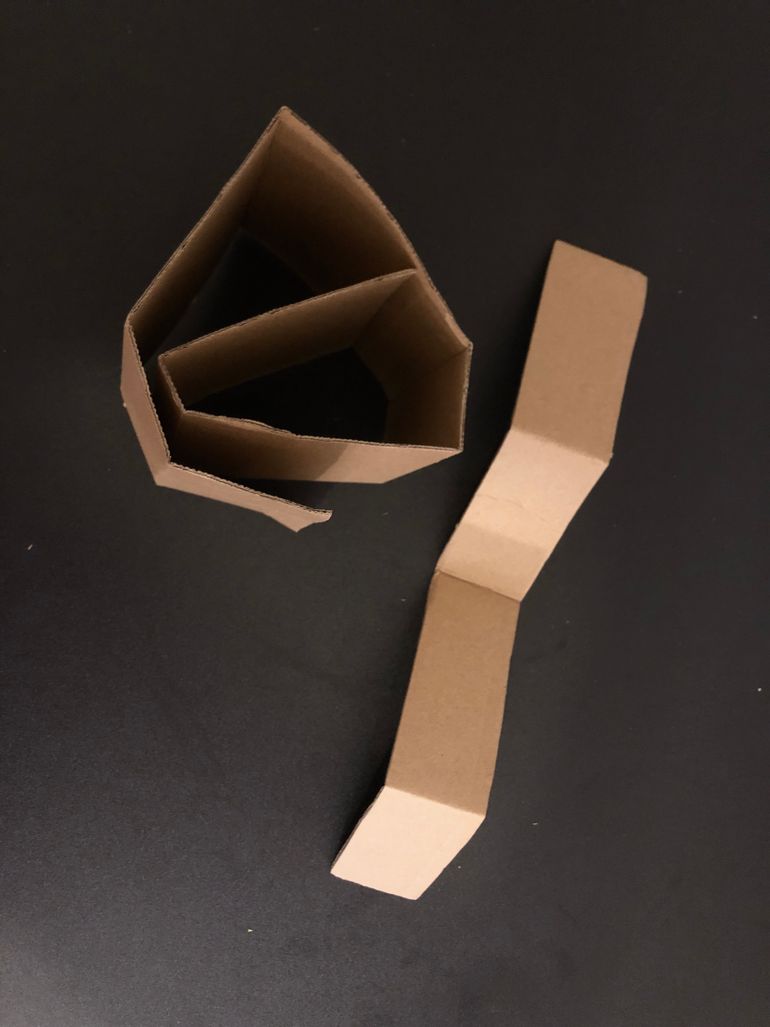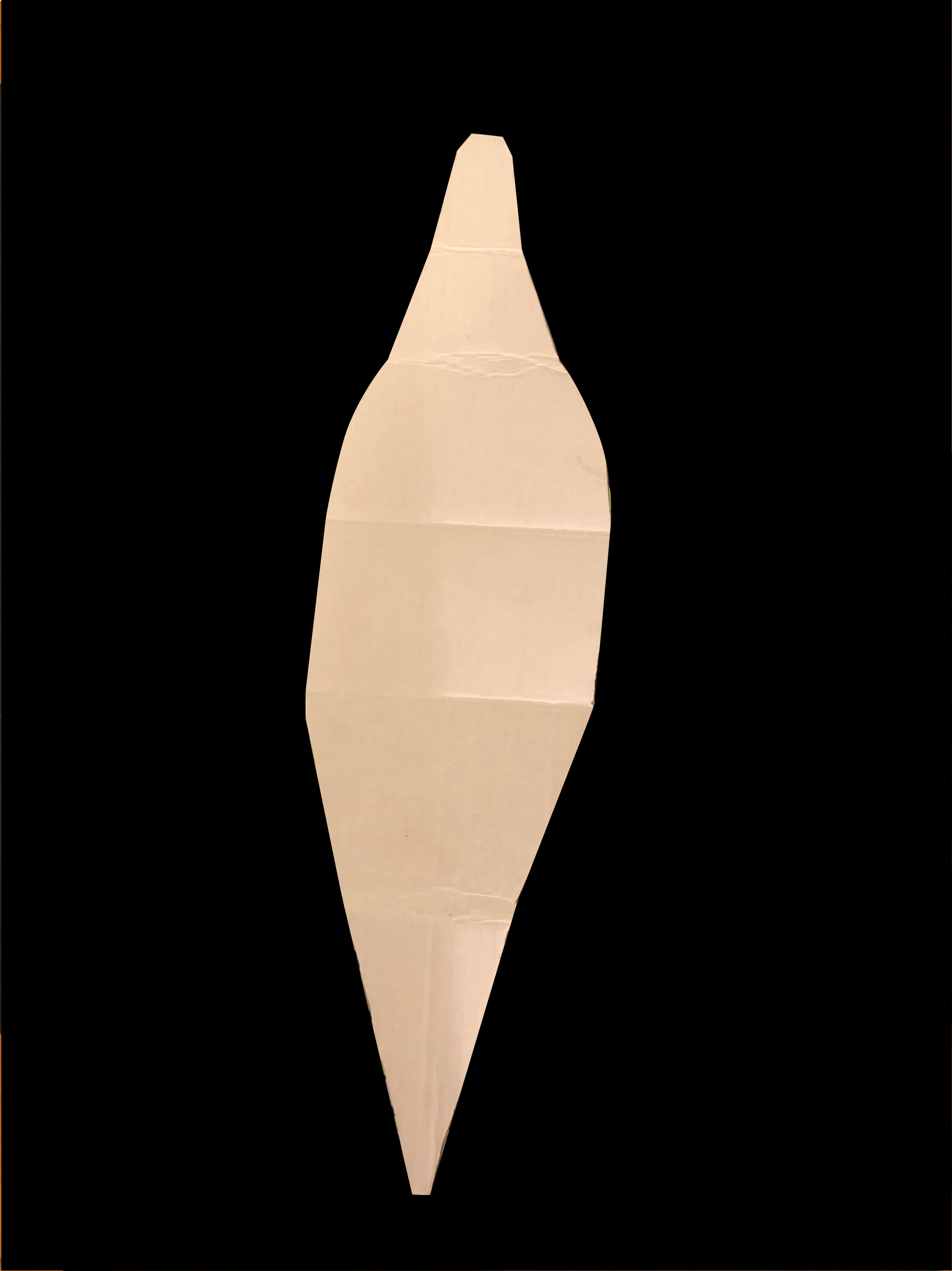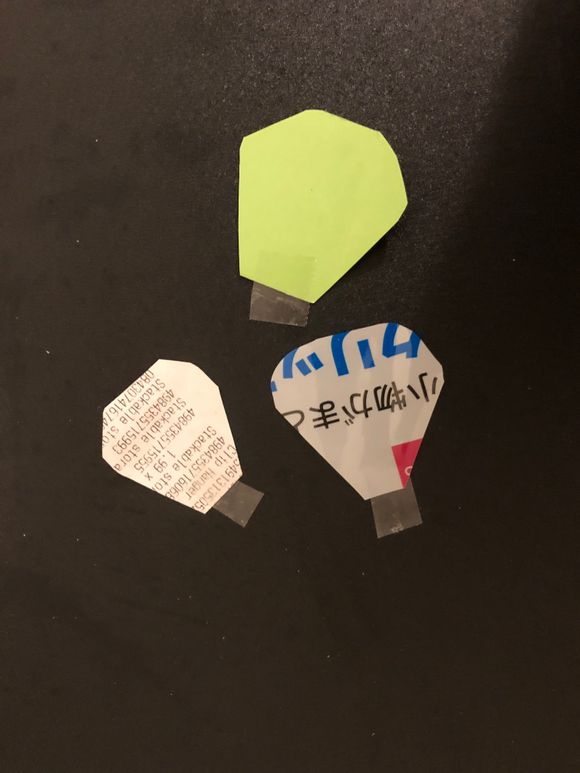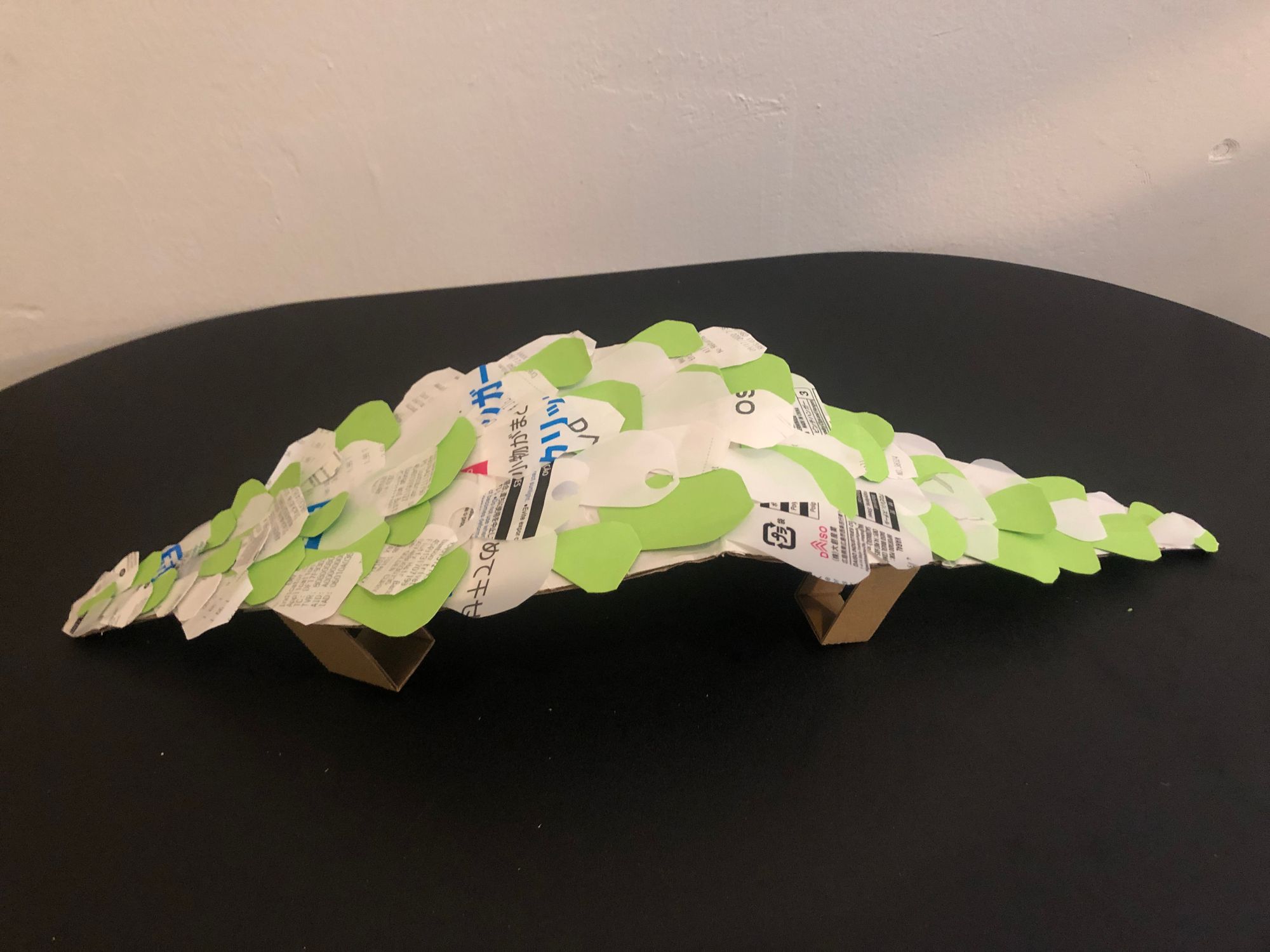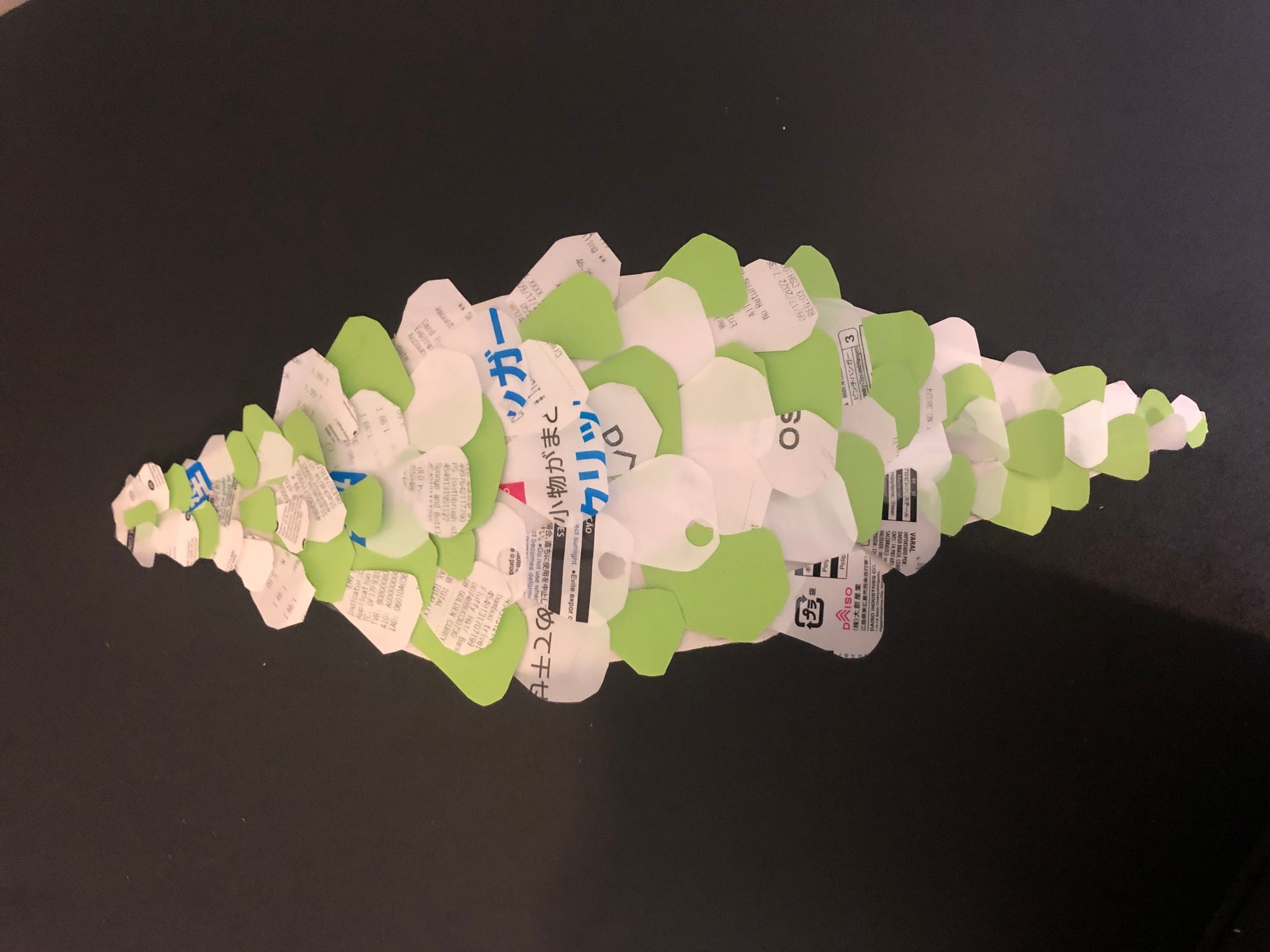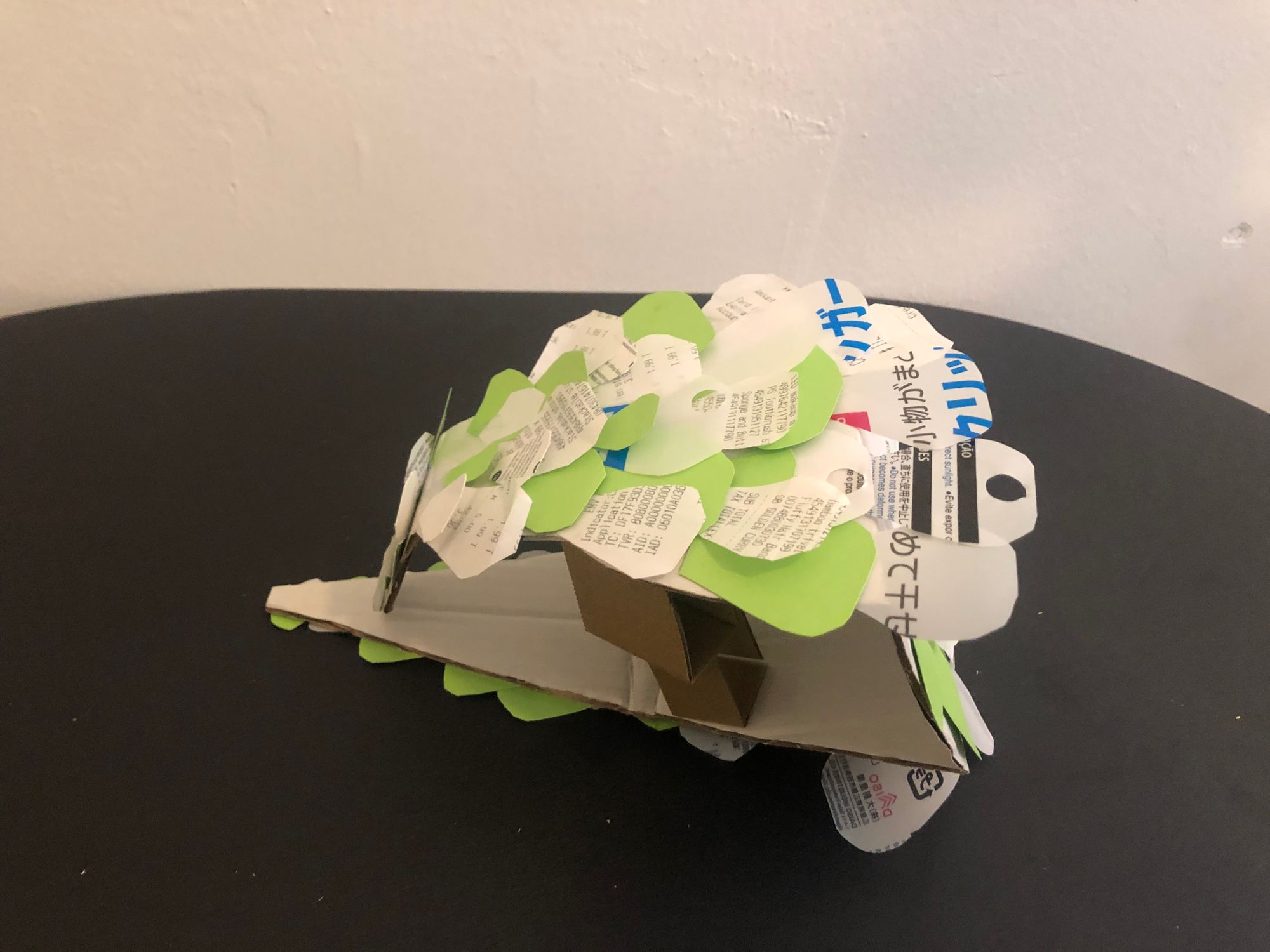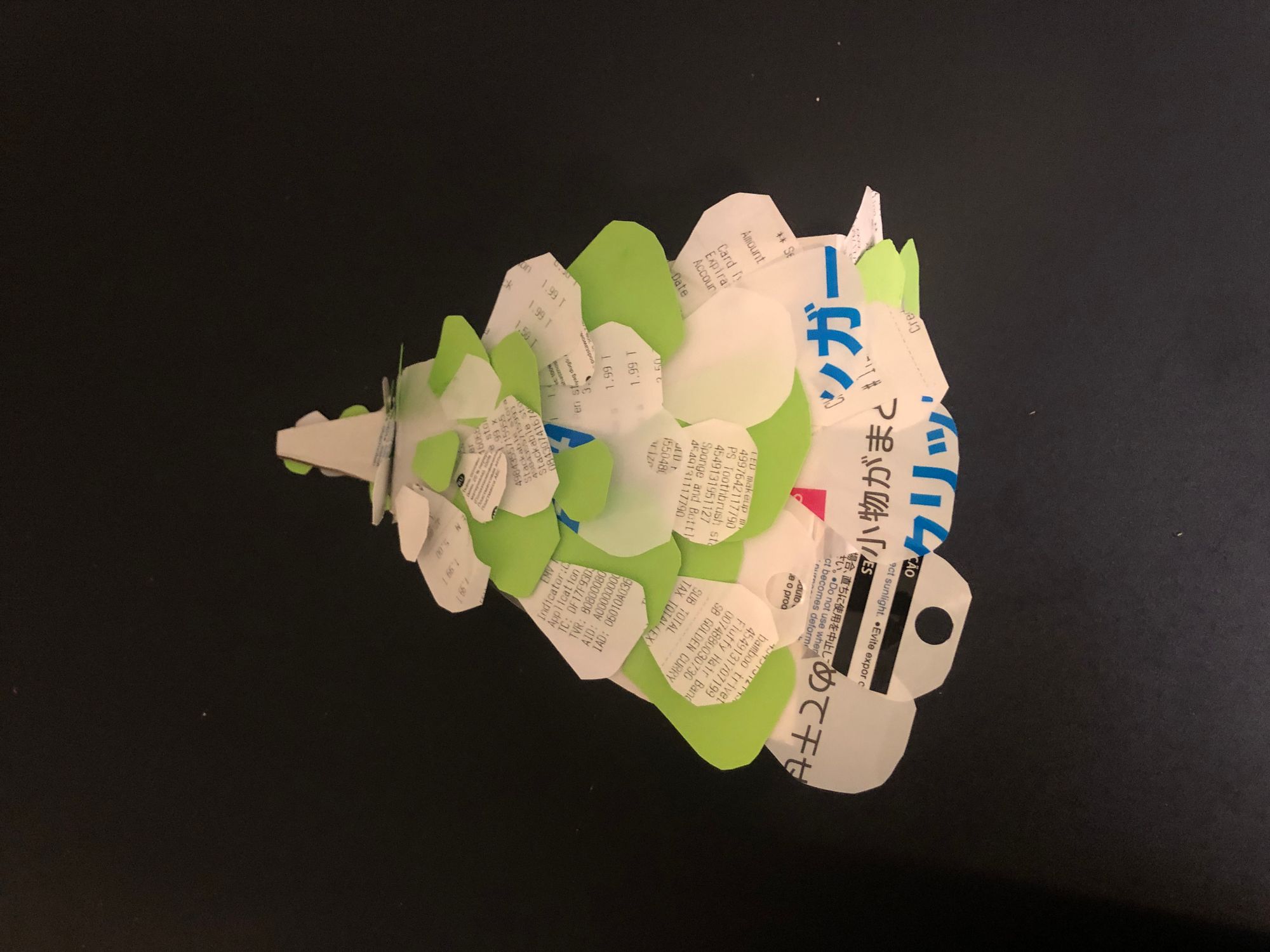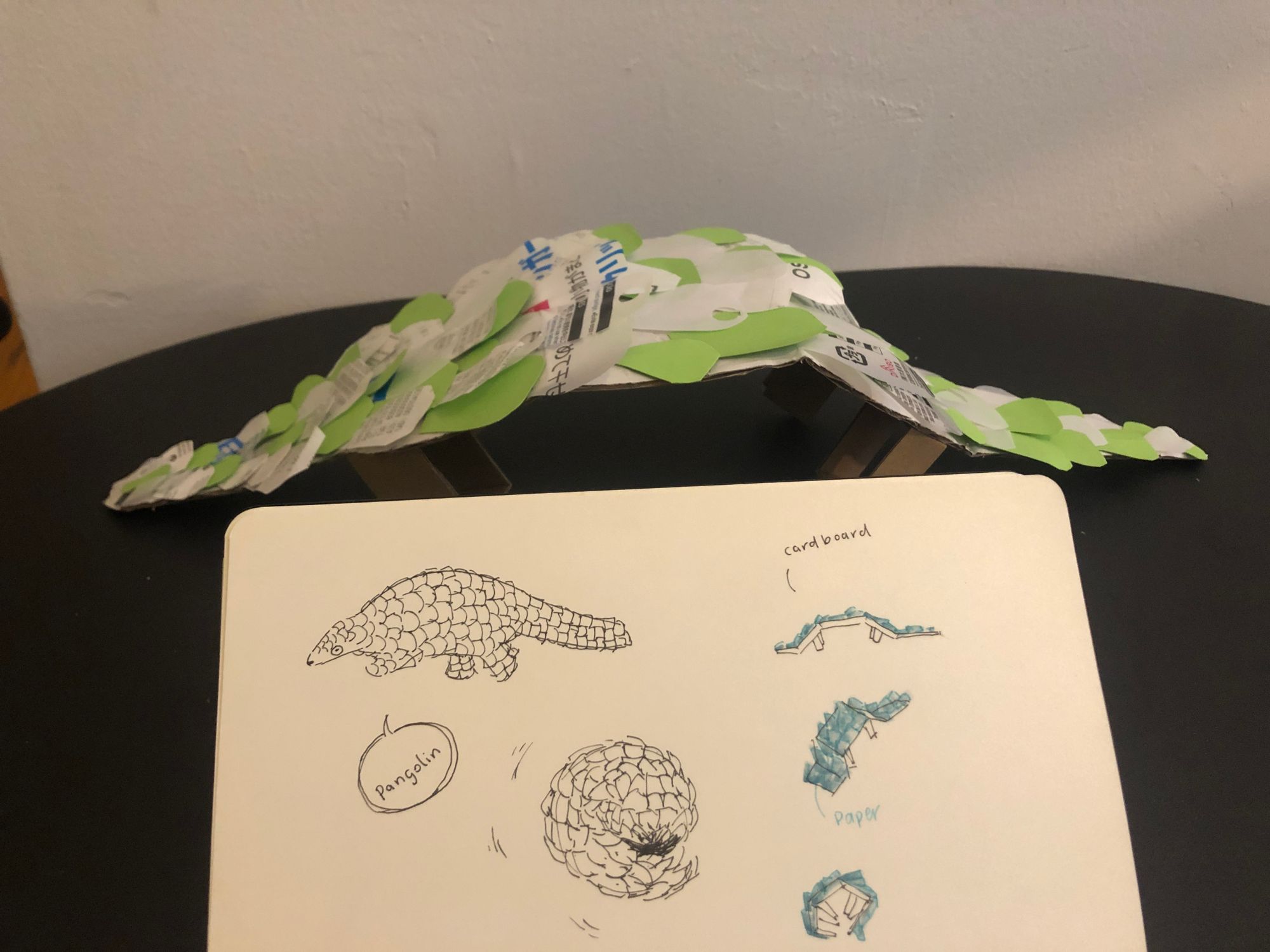This week’s assignment is to build an endangered animal from recycled materials. I started by doing research on endangered and threatened animals in Thailand, my home country, and finally decided to create a pangolin.
Pangolins, also known as scaly anteaters, are mostly found in Africa and Asia. A pangolin is a shy creature that has a small head and a long, broad tail. Because it has no teeth, it picks up food with a sticky tongue and has a gizzard-like stomach adapted for grinding. Pangolins eat ants, termites, larvae, and other small insects. One single pangolin can consume around 70 million ant and termites per year; therefore, its extinction would have a big impact on the environment.
Pangolins are under threat primarily from illicit trade. They are known to be most trafficked mammals in the world. Pangolins are hunted for bushmeat, as their meat is considered to be a luxury product in parts of China and Vietnam. Their scales, blood, and fetuses are used in traditional medicine in China and Africa.
Although pangolins’ major threats are caused by humans, there are not adequate legal protections, while the ones that exist have been largely ineffective and weakly enforced. But there are many organizations starting campaigns and petitions to help threatened, including pangolins. So please check it out!
Fun facts:
Pangolin means ‘roller’. They’re able to roll themselves into a ball as self-defense.
Pangolins are the only mammals wholly-covered in scales.
Collecting recycled materials
I just moved into my new apartment and had ordered a lot of stuffs for room decoration. For this project, I had collected cardboards from the boxes, scrap papers, receipts, and plastic bags.
Sketching
I started by sketching a pangolin from a side view, when it’s standing and rolling. Because pangolins’ ability to roll makes it really special, I wanted to make my prototype rollable. So, I tried to think about materials that can be rolled up, and finally came up with a cardboard.
From the sketches, my pangolin is made by cardboard and scrap papers. The cardboard would be used for the body and legs, and I would cut papers into hexagonal shape for scales.
Prototyping
After done with the final sketch, I began playing with the recycled materials. I tried folding a cardboard and rolling it up. Then, I cut the cardboard into a pangolin’s body shape.
Then, I cut papers into the shape of pangolins’ scale and attached them to the cardboard body. I used scrap papers, receipts, and a plastic package, which all have different textures and patterns. While placing and rearranging them one by one to the cardboard, I observe these recycled materials at the same time, using the senses of seeing and touching.
After adding the scales to my pangolin’s body, I gave them the legs, and here’s the final prototype!
Full-body pangolin — side view
Full-body pangolin — top view
Lovely rolling pangolin! — side view
Rolling pangolin — top view
A final prototype with my early sketches
Reflection
I had a lot of fun designing and crafting this pangolin!
This project allowed me to experiment with unlimited possibility using the recycled materials that I collected. I learned from observing the shapes, colors, and patterns of the materials, deciding which parts of them could work with my prototype. From doing prior research on pangolin, I understand its biological habits and got inspirations from it! I really enjoy the process of ideation and designing how my prototyped pangolin can roll. At the end, there’s no need for any fancy material apart from a simple cardboard to make it work.
Doing hands-on work raises questions and possibilities.
While working on the prototype, I encountered small problems and questions that I hadn’t thought of when drawing the sketches, like how the shape doesn’t look like a pangolin when looking from the top view, would adding more layers of scales solve that? Should I use the papers that have similar colors to a pangolin’s original scales? This process allows me to explore more possibilities and think about future improvements and iterations!
Resources
